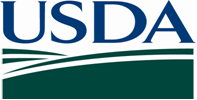Maryland Department of Agriculture is committed to working with the state's farmers to manage the risk associated with farming in the 21st Century. Financial risk is a key concern for our state's farmers.
The Maryland Insurance Administration has produced a consumer's guide that focuses entirely on insurance issues relating to agricultural operations.
The Consumer's Guide to Farm Insurance in Maryland is intended to help farmers understand their coverage and options for property insurance, including liability and crop insurance resources. The guide provides definitions of terms and types of coverage, purchasing tips, contact information, and frequently asked questions about farm insurance. Visit the
Maryland Insurance AdministrationMaterials from the July 2016 Dairy Workshops
Crop Insurance

Another key element of risk reduction for farmers is crop insurance. Crop insurance, subsidized and regulated by the USDA-Risk Management Agency (RMA), is an important tool in managing financial risk associated with farming. It is intended to help farmers survive disasters and return to profitability, providing they purchase an adequate amount of protection.
Maryland farmers underutilize federally subsidized crop insurance compared to counterparts in other parts of the country. To improve participation rates, USDA-RMA has partnered with MDA and the University of Maryland since 2002 to increase awareness and understanding of crop insurance. Participation is increasing and Maryland farmers are reaping the returns. In 2011, Maryland farmers received more than $30 million in crop insurance payments or about $1.80 for every $1 spent by farmers on crop insurance premiums.
In 2012, farmers invested more than $12 million in premiums for more than 6,600 crop insurance policies covering $359 million in liabilities. Close to 70% of corn acres, 80% of soybean acres and 50% of wheat acres are protected by Crop Insurance.
